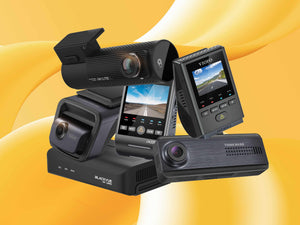This installation photo blog will show how we hardwire-installed a BlackVue DR750S-2CH dash cam into a Ford Bronco (with removable hardtop). If you're considering installing a dash cam, we recommend the Blackbox MyCar Essential Install Kit. The BlackboxMyCar Essential Install Kit comes with a circuit tester, trim remover tool, and other handy tools to make the project more manageable.





